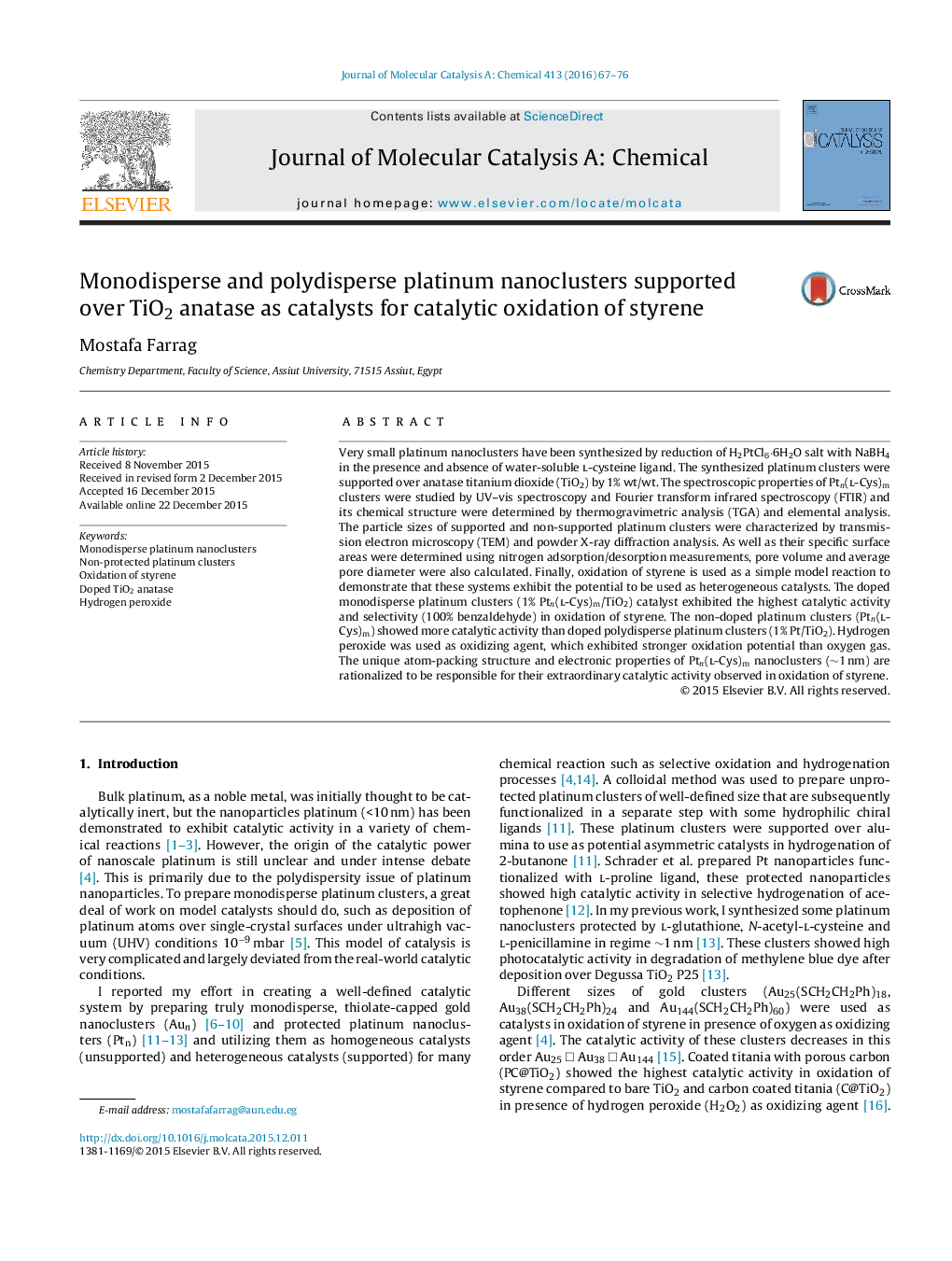| کد مقاله | کد نشریه | سال انتشار | مقاله انگلیسی | نسخه تمام متن |
|---|---|---|---|---|
| 64751 | 48369 | 2016 | 10 صفحه PDF | دانلود رایگان |

• Reduction of H2PtCl6·6H2O in presence of l-cysteine produces monodisperse clusters.
• Reduction of H2PtCl6·6H2O in absence of ligand produces polydisperse clusters.
• Supported monodispersed platinum clusters on TiO2 are more active than polydispersed.
• The extraordinary catalytic activity of Ptn(l-Cys)m due to their electronic properties.
• The electron transfer from TiO2 to Ptn(l-Cys)m promotes styrene oxidation.
Very small platinum nanoclusters have been synthesized by reduction of H2PtCl6·6H2O salt with NaBH4 in the presence and absence of water-soluble l-cysteine ligand. The synthesized platinum clusters were supported over anatase titanium dioxide (TiO2) by 1% wt/wt. The spectroscopic properties of Ptn(l-Cys)m clusters were studied by UV–vis spectroscopy and Fourier transform infrared spectroscopy (FTIR) and its chemical structure were determined by thermogravimetric analysis (TGA) and elemental analysis. The particle sizes of supported and non-supported platinum clusters were characterized by transmission electron microscopy (TEM) and powder X-ray diffraction analysis. As well as their specific surface areas were determined using nitrogen adsorption/desorption measurements, pore volume and average pore diameter were also calculated. Finally, oxidation of styrene is used as a simple model reaction to demonstrate that these systems exhibit the potential to be used as heterogeneous catalysts. The doped monodisperse platinum clusters (1% Ptn(l-Cys)m/TiO2) catalyst exhibited the highest catalytic activity and selectivity (100% benzaldehyde) in oxidation of styrene. The non-doped platinum clusters (Ptn(l-Cys)m) showed more catalytic activity than doped polydisperse platinum clusters (1% Pt/TiO2). Hydrogen peroxide was used as oxidizing agent, which exhibited stronger oxidation potential than oxygen gas. The unique atom-packing structure and electronic properties of Ptn(l-Cys)m nanoclusters (∼1 nm) are rationalized to be responsible for their extraordinary catalytic activity observed in oxidation of styrene.
Figure optionsDownload high-quality image (104 K)Download as PowerPoint slide
Journal: Journal of Molecular Catalysis A: Chemical - Volume 413, March 2016, Pages 67–76